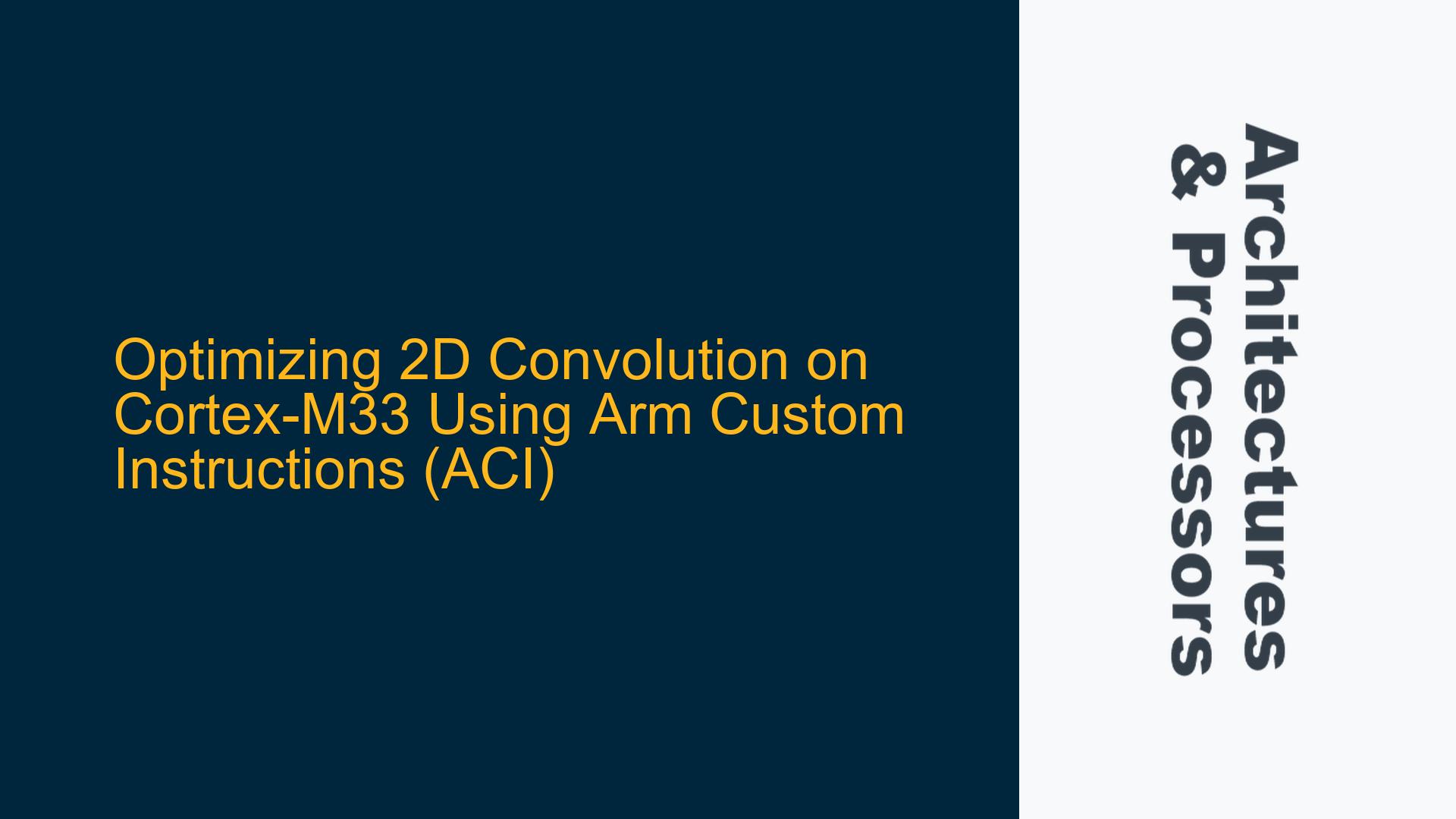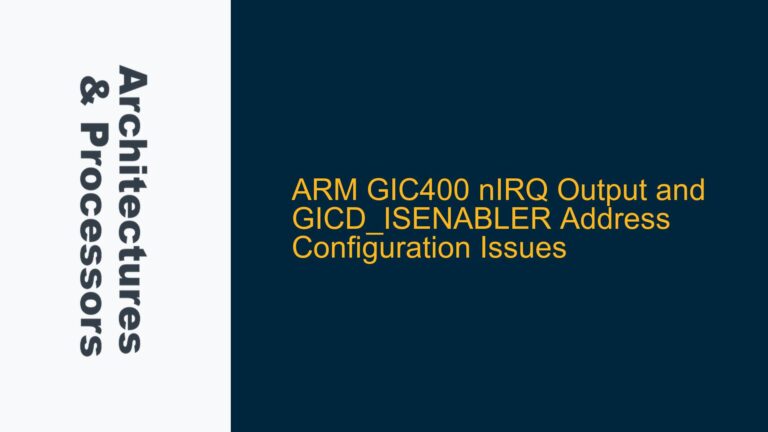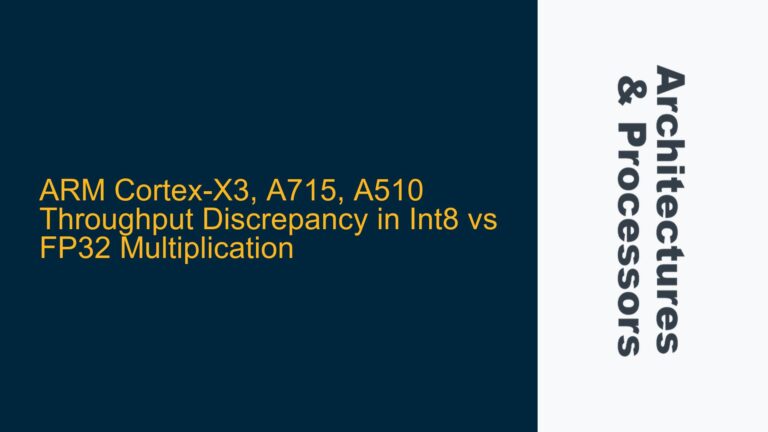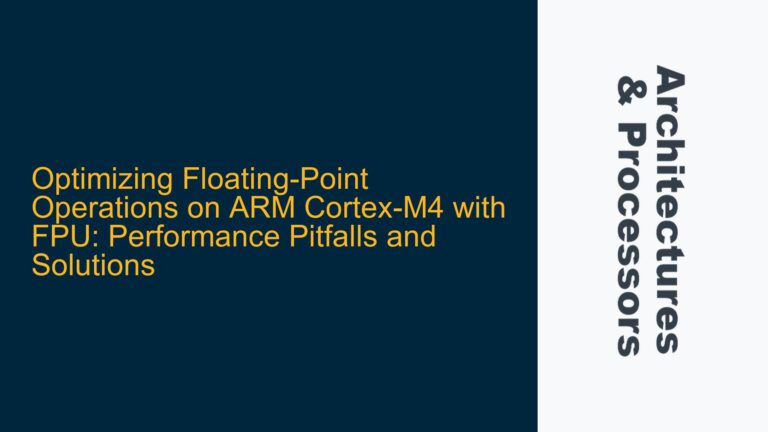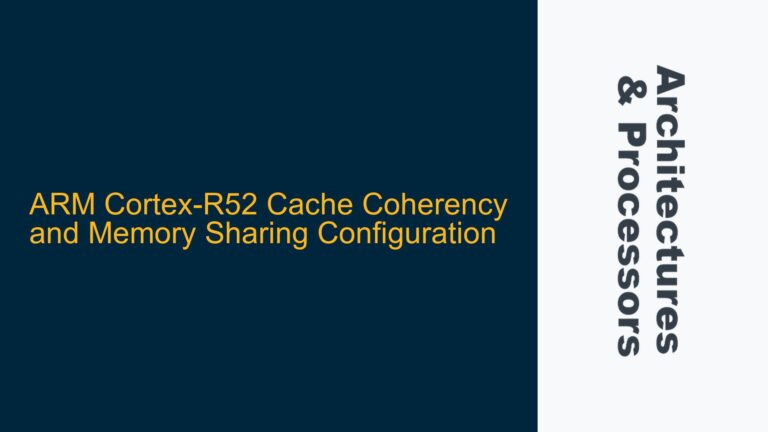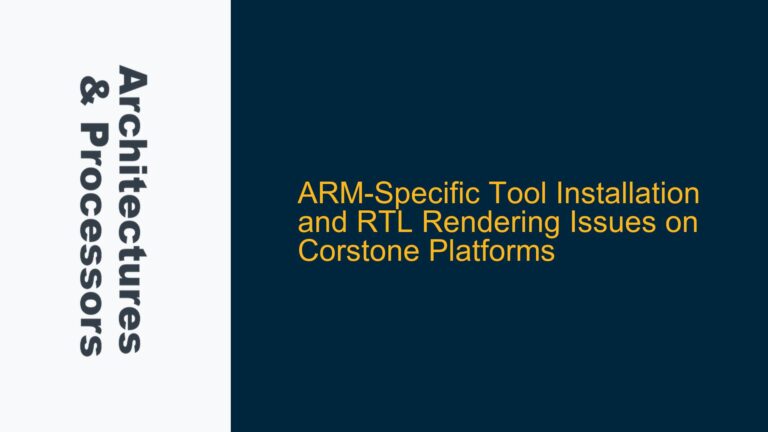ARM Cortex-M33 ACI Implementation Challenges for 2D Convolution Optimization
The Cortex-M33 processor, part of Arm’s Cortex-M series, is a powerful embedded processor designed for applications requiring a balance of performance, power efficiency, and security. One of its standout features is the support for Arm Custom Instructions (ACI), which allows silicon vendors to extend the processor’s instruction set with custom operations tailored to specific use cases. However, leveraging ACI for optimizing computationally intensive tasks like 2D convolution presents several challenges, particularly when the target hardware lacks publicly available documentation or support for these custom instructions. This post delves into the core issues, potential causes, and actionable solutions for implementing and optimizing 2D convolution on the Cortex-M33 using ACI.
Missing GPU Register Documentation and ACI Implementation Gaps
The primary issue revolves around the inability to utilize the Neochrome GPU on the STM32U5A9J-DK board due to the lack of publicly available GPU register documentation. This forces the developer to rely on the Cortex-M33’s CPU for computationally intensive tasks like 2D convolution and trigonometric operations. While the Cortex-M33 supports Arm Custom Instructions (ACI) as a potential workaround, the absence of clear implementation guidelines and vendor-specific ACI support complicates the optimization process.
The Cortex-M33’s ACI feature is designed to allow silicon vendors to add custom instructions that can accelerate specific algorithms or operations. However, the implementation of ACI is entirely dependent on the silicon vendor, and in this case, STMicroelectronics has not provided documentation or support for ACI on the STM32U5A9J-DK board. This creates a significant gap in the developer’s ability to leverage ACI for optimizing 2D convolution and other mathematical functions.
Additionally, the developer’s existing codebase, written in C, includes complex mathematical operations such as asin and atan2, which are inherently computationally expensive on a microcontroller. Without access to GPU acceleration or ACI, these operations must be performed on the CPU, leading to potential performance bottlenecks. The lack of tutorials or comprehensive guides on programming ACI further exacerbates the problem, leaving the developer with limited resources to proceed.
Vendor-Specific ACI Limitations and Mathematical Function Overheads
The root cause of the issue lies in two key areas: vendor-specific limitations in implementing ACI and the computational overhead of mathematical functions on the Cortex-M33 CPU.
Vendor-Specific ACI Limitations
Arm Custom Instructions are not universally implemented across all Cortex-M33 devices. Their availability and functionality depend entirely on the silicon vendor’s design choices. In the case of the STM32U5A9J-DK board, STMicroelectronics has not exposed ACI capabilities, either due to hardware limitations or a lack of documentation. This means that even though the Cortex-M33 architecture supports ACI, the developer cannot use them without vendor-specific support.
Computational Overheads of Mathematical Functions
The 2D convolution algorithm and trigonometric functions like asin and atan2 are computationally intensive. On a microcontroller like the Cortex-M33, these operations can consume significant CPU cycles, especially when performed repeatedly in a loop. The absence of hardware acceleration (via GPU or ACI) forces the CPU to handle these operations, leading to increased execution time and reduced system performance. Additionally, the Cortex-M33’s single-precision floating-point unit (FPU) may not be sufficient to handle the precision and speed required for these operations in real-time applications.
Lack of ACI Programming Resources
Another contributing factor is the scarcity of resources for programming ACI. While Arm provides high-level documentation on ACI, there are no detailed tutorials or step-by-step guides for implementing custom instructions on specific Cortex-M33 devices. This lack of resources makes it difficult for developers to experiment with and optimize their code using ACI.
Leveraging Arm-2D Library and Software Optimization Techniques
Given the constraints of the STM32U5A9J-DK board and the lack of ACI support, the developer can explore alternative approaches to optimize 2D convolution and mathematical functions. These include leveraging the Arm-2D library, implementing software-based optimizations, and exploring vendor-specific tools for performance tuning.
Arm-2D Library for 2D Convolution
The Arm-2D library is a lightweight, open-source library designed for 2D image processing on Arm Cortex-M processors. It provides optimized functions for common operations like convolution, scaling, and blending, which can significantly reduce the computational load on the CPU. By integrating Arm-2D into the project, the developer can offload some of the 2D convolution tasks to the library, which is specifically optimized for Cortex-M processors.
Software-Based Optimizations
In the absence of hardware acceleration, software-based optimizations can help improve the performance of mathematical functions and 2D convolution. These optimizations include:
- Lookup Tables for Trigonometric Functions: Precomputing values for
asinandatan2and storing them in lookup tables can reduce the runtime computational overhead. This approach trades memory usage for faster execution, which is often acceptable in embedded systems with limited processing power. - Fixed-Point Arithmetic: Replacing floating-point operations with fixed-point arithmetic can significantly improve performance on the Cortex-M33. Fixed-point arithmetic eliminates the overhead of the FPU and is well-suited for applications where high precision is not required.
- Loop Unrolling and Inlining: Manually unrolling loops and inlining small functions can reduce the overhead of function calls and loop control, leading to faster execution. This technique is particularly effective for computationally intensive algorithms like 2D convolution.
Vendor-Specific Tools and Performance Tuning
STMicroelectronics provides a range of tools and libraries for optimizing performance on STM32 microcontrollers. These include:
- STM32CubeMX: A graphical tool for configuring STM32 microcontrollers and generating initialization code. It can help the developer optimize clock settings, peripheral configurations, and power management for better performance.
- STM32CubeIDE: An integrated development environment (IDE) that includes performance analysis tools like the STM32 Profiler. These tools can help identify performance bottlenecks and guide optimization efforts.
- STM32 HAL and LL Libraries: The Hardware Abstraction Layer (HAL) and Low-Layer (LL) libraries provide optimized functions for interacting with STM32 peripherals. Using these libraries can simplify development and improve performance.
Exploring Alternative Hardware
If the performance requirements of the project cannot be met with software optimizations alone, the developer may need to consider alternative hardware solutions. This could include:
- Cortex-M7 Processors: The Cortex-M7 offers higher performance than the Cortex-M33, with a dual-issue pipeline and optional double-precision FPU. It is better suited for computationally intensive tasks like 2D convolution and trigonometric functions.
- External Accelerators: Using external hardware accelerators, such as FPGAs or DSPs, can offload specific tasks from the CPU and improve overall system performance. This approach requires additional hardware and integration effort but can provide significant performance gains.
Conclusion
Optimizing 2D convolution and mathematical functions on the Cortex-M33 presents significant challenges, particularly when GPU acceleration and Arm Custom Instructions are unavailable. By leveraging the Arm-2D library, implementing software-based optimizations, and utilizing vendor-specific tools, developers can mitigate these challenges and achieve acceptable performance. However, for applications with stringent performance requirements, exploring alternative hardware solutions may be necessary. The key takeaway is to carefully evaluate the available resources and choose the most appropriate optimization strategy based on the specific constraints and goals of the project.
